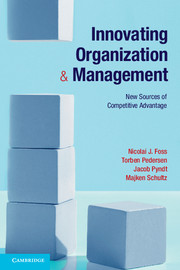Chapter 5 - Coloplast
Innovating innovation
Published online by Cambridge University Press: 05 June 2012
Summary
“Global Research and Development (R&D) has joint responsibility with Global Marketing for the development of new products. The products need to be developed at a much higher pace. That is why we start applying all possible LEAN-methods in order to reduce the time it takes to bring new products to the market.”
CCO Lars Rasmussen in World of Coloplast, No. 1, January 2008As he presented the company’s guidance for the coming quarters, Coloplast’s President and CEO, Sten Scheibye, felt an incipient pessimism among the equity analysts as they posed critical questions. Flanked by CCO Lars Rasmussen and CFO Lene Skole, he had already gone through the company’s full-year financial statement for 2006/7. Now the corps of equity analysts was puzzled about the company’s long-term targets, which had been the subject of varying statements in recent years. While recognizing the need for clarity, the critique that Coloplast had become less transparent did not affect Scheibye. According to him, the company’s underlying performance for 2006/7 was satisfactory, with revenue growth of 20 percent and substantial profitability gains resulting from the ongoing relocation of production to Hungary and China (see Table 5.1). Commenting on the full-year financial statement, the CEO noted: “Our financial statement was not well-received . . . I understand why they are questioning our forecasts. Yet, I do not grasp their pessimism. It is not a downgrading” (Jyllands-Posten, November 22, 2007).
In reality, Sten Scheibye was more concerned with the concrete means of realizing the outlined targets. In that respect, 2007 had been a very eventful and dramatic year. Coloplast was in the middle of a transformation. Originally a Danish company mainly operating in Europe, it was now becoming a truly global company with value chain functions scattered all over the world and a growing position as a global market leader. While the relocation of production was well underway, other areas, such as R&D, sales, and marketing, were on the threshold of becoming more standardized and global. During the previous spring, following comprehensive analytical work, Coloplast launched the biggest organizational restructuring in a quarter of a century, which affected most of the company’s employees, product divisions, and business areas (see Figures 5.1 and 5.2). These multiple, pervasive changes needed time to settle. “This is the largest change introduced to the company in the last 23 years. We need to break radically with the way we organize our work and processes if our growth ambitions are to be realized” (CCO Lars Rasmussen, Berlingske Tidende, February 22, 2007).
- Type
- Chapter
- Information
- Innovating Organization and ManagementNew Sources of Competitive Advantage, pp. 105 - 137Publisher: Cambridge University PressPrint publication year: 2012



